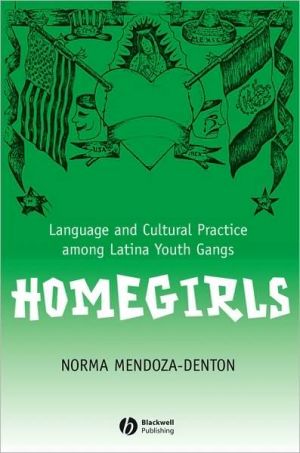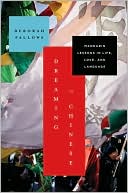Homegirls: Language and Cultural Practice Among Latina Youth Gangs
In this ground-breaking new book on the Norteña and Sureña (North/South) youth gang dynamic, cultural anthropologist and linguist Norma Mendoza-Denton looks at the daily lives of young Latinas and their innovative use of speech, bodily practices, and symbolic exchanges that signal their gang affiliations and ideologies. Her engrossing ethnographic and sociolinguistic study reveals the connection of language behavior and other symbolic practices among Latina gang girls in California, and their...
Search in google:
In this ground-breaking new book on the Norteña/Sureña (North/South) youth gang dynamic, cultural anthropologist and linguist Norma Mendoza-Denton looks at the daily lives of young Latinas and their innovative use of speech, bodily practices, and symbolic exchanges to signal their gang affiliations and ideologies. She analyzes their use of language as well as social and cultural practices such as the circulation of poetry, photographs, and drawings, and also their practices around makeup and bodily presentation. Through this detailed exploration, Homegirls examines the localized North-South rivalry between the bilingual, English-speaking and Americanized Norte girls and the Mexican or Latin-American-oriented, Spanish-speaking Sur girls. Mendoza-Denton uncovers a new dimension to studies of youth styles, where gang members are innovative not only in terms of dress, make-up, and music, but also by participating in crucial processes of language variation and change. This engrossing ethnographic and sociolinguistic book reveals the connection of language behavior and other symbolic practices among youth, and their connections to larger social processes of nationalism, racial/ethnic consciousness, and gender identity.
List of Figures viiiList of Tables xAcknowledgments xiAcknowledgment of Sources xivIntroduction 1La Migra 10Beginning Fieldwork 42Norte and Sur: Government, School, and Research Perspectives 76Hemispheric Localism: Language, Racialized Nationalism, and the Politicization of Youth 101"Muy Macha": Gendered Performances and the Avoidance of Social Injury 148Smile Now Cry Later: Memorializing Practices Linking Language, Materiality, and Embodiment 176Icons and Exemplars: Ethnographic Approaches in Variationist Sociolinguistics 207Variation in a Community of Practice 230"That's the Whole Thing [characters not reproducible]!": Discourse Markers and Teenage Speech 265Conclusion 292References 297Appendix 324Index 328
\ From the Publisher"Homegirls should rock the very foundations of criminological understandings of gangs, especially concerning female gang members. If scientific rigor increases the book's impact, no one should begrudge Mendoza-Denton the specialization of the latter chapters. In any case, this is a book about much more than language-or perhaps it reveals language to be much more than we think-and it is well worth picking up for an enlightening glimpse of a population that has been ascribed infamy without being known much at al." (American Studies Journal, 1 March 2009)\ "Homegirls, an experimental sociolinguistic ethnography of subaltern others, spans a decade of research by a woman who is keen to examine her position as an outsider/insider in the research process and the identity formation of her participants: female gang members.” (American Journal of Sociology, September 2009)\ “Part reflexive narrative, part engaging ethnography, part fine-grained sociolinguistic study, and part riveting disquisition on the politics of eyeliner, this delightful book twinkles with wit and blazes with empathy and intelligence.”\ Don Kulick, New York University\ “Wonderfully written and as riveting as a novel, Homegirls provides a unique window on the linguistic and ethnographic patterns – and their interrelationship – of Northern California Mexican-American high school students who are members of girl gangs. It's sure to become a classic.”\ Deborah Tannen, Georgetown University\ “Mendoza-Denton provides an extraordinary fusion of ethnographic insight and sociolinguistic analysis. I know of no better demonstration of how linguistic and cultural variables are entwined in social interaction.”\ William Labov, University of Pennsylvania\ "A landmark work in sociocultural linguistics! The breadth and depth are spectacular and the humanistic presentation makes the description captivatingly accessible to both a professional and a public audience."\ Walt Wolfram, North Carolina State University provides a stunning and innovative linguistic, anthro-political ethnography of how gang-affiliated Latina girls talk, dress, and interact. It is certain to become a classic in the fields of sociolinguistics and linguistic anthropology.”\ Marjorie Goodwin, University of California, Los Angeles\ \ \ \ \








